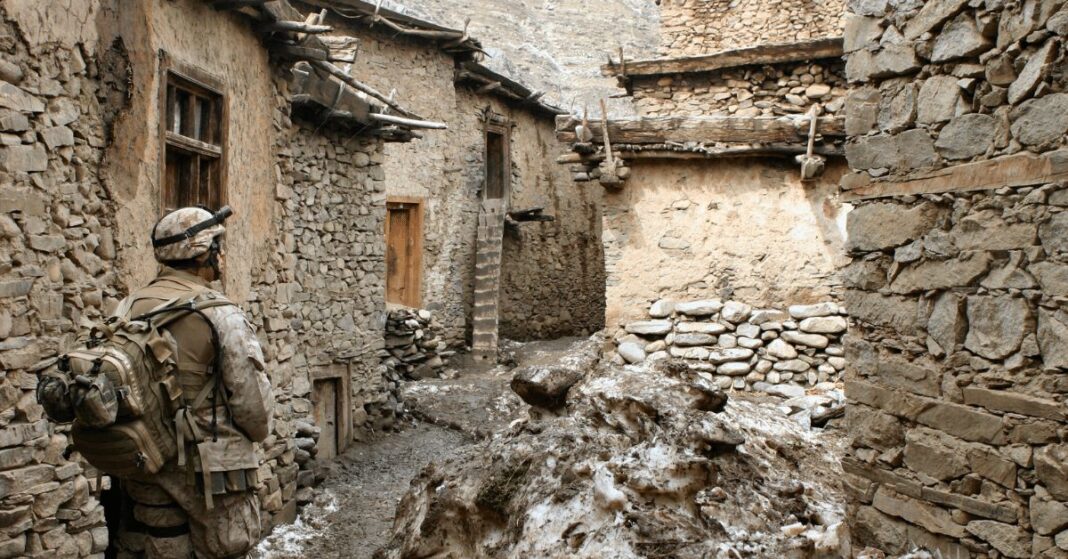World War II
World War II, or the Second World War, is an international conflict that lasted from 1939 to 1945. It was a major conflict that involved the vast majority of the world’s countries and two major military alliances. It was the most devastating war in history. Learn more about World War II and what led up to it by reading our article.
Invasion of Europe by Nazi Germany
The Invasion of Europe by Nazi Germany during the Second World War was one of the most devastating episodes of the war. It caused enormous damage to Europe and resulted in the loss of millions of lives. The United States, the Soviet Union, and Britain were occupied with internal politics and not eager to face the Nazi regime.
Germany’s invasion of Poland is often considered the inflection point of the war, since it resulted in the division of Poland. Great Britain and France declared war on Germany in 1939, but both countries failed to stop the German advance into western Europe. The Germans used their powerful air force and a new tactic known as the Blitzkrieg, which involved breaking through enemy lines quickly, resulting in great destruction. Germany was able to conquer much of western Europe in just a few months. Eventually, the Nazis invaded Norway and Denmark, further proving their intentions as a master race.
The invasion of the Soviet Union in June 1941 was code-named Operation Barbarossa. Although the German army was outnumbered, their aircraft and tanks were far superior, and Russian aviation technology was outdated. Nevertheless, the surprise invasion helped the Germans get within 200 miles of Moscow by mid-July. However, arguments between Hitler and his commanding officers delayed the German advance until October.
Japanese surrendered to the Allies
On August 14, 1945, the Japanese surrendered to the Allies after nearly eight years of fighting. After a military coup, Emperor Hirohito accepted the conditions of the Potsdam Declaration. The declaration outlined the conditions under which Japan should surrender, including complete disarmament and the removal of the emperor’s authority and influence.
The ceremony was attended by representatives of the United States, China, and the United Kingdom. Among those present at the Japanese surrender ceremony were Captain Hidemi Yoshida, Rear Admiral Ichiro Yokoyama, Lieutenant General Kawabe Torashiro, and Major General Morkikazu Amano. The US military, meanwhile, was represented by General Douglas MacArthur, who accepted the surrender documents on behalf of the Allied forces.
The Japanese surrender to the Allies was a symbolic moment in history. The Japanese emperor Hirohito formally accepted the declaration on August 15. Negotiations took place in Manila, and the surrender was formally signed in Tokyo Bay. A year later, the Allied forces began a massive campaign against Japan to retake its territories.
By summer 1945, the Japanese navy and air force were largely destroyed. Combined with the Allied naval blockade and intensive bombing, Japan was devastated. The Americans captured the Japanese island of Okinawa and put General Douglas MacArthur in charge of an invasion of the Japanese home islands.
German invasion of Norway and Denmark
The German invasion of Norway and Denmark during World War Two was a major military operation. The invasion began on 9 April 1940, with 10,000 German troops seizing Oslo and its major ports. It was a disastrous invasion for the German navy, which suffered huge losses. Norwegian coastal guns sank the German cruiser Blucher at Oslo, and the German warships were scattered in vulnerable positions. The Royal Navy scored a significant victory at Narvik, Norway, and Allied aircraft and submarines sank many German warships.
In December 1939, the German Army considered occupying Denmark and hoped to do so in conjunction with its operation against Norway. The German Navy decided to use fast warships as troop transports since they could reach all of their targets at the same time. Norway was a relatively small country, with a population of only three million.
In the months that followed the German invasion, the Nazis began planning physical changes to Norway. They hoped that these changes would secure the Norwegians’ incorporation into the greater German Reich and establish long-term German rule. The Germans had no intention of withdrawing. In fact, they publicly promised the Norwegian people that the occupation was only temporary and that it was only to protect them from British aggression.
The German invasion of Belgium and the Netherlands
The German invasion of Belgium and the Netherlands during World war II left many people in a state of shock. While many hoped for peace, the invasion was a catastrophe for these countries. After the Dutch and Belgian forces surrendered, the Germans occupied the countries. However, resistance movements grew in the German-occupied areas.
The Allied forces were slow to advance in the early months of World War II. Their first step was the liberation of Brussels in early September 1944. In the following month, British Field Marshal Bernard Montgomery presented Eisenhower with a new plan for the invasion. This plan involved capturing several bridges over major Dutch rivers and moving quickly towards the heart of Germany. Montgomery believed that this plan could bring the war to an end by Christmas.
The German Army had 3.5 million men, and the Allies had just half as many. But while the Germans had a superior force in men, they had less than half the numbers of tanks. In addition, most German tanks were dispersed among infantry units rather than in dedicated armored divisions. Furthermore, many of them were lacking radios. Consequently, the Dutch and Belgian defenses relied heavily on flooding in the path of the German army.
The German invasion of northern Italy
The German invasion of northern Italy during World War II was a major military operation, resulting in the death of several thousand Italian soldiers. The peninsula was rugged and difficult to defend. The Germans decided to collect all of their forces in the region and launch a counterattack twice the size of the French force. By the end of the day, they had reached Anzio.
The invasion was aimed at knocking Italy out of the war. This would allow Allied naval forces to control the Mediterranean Sea and secure lines of communication to Asia and Egypt. It would also force the Axis divisions to transfer their troops from the Eastern Front to defend Italy. This would leave the Soviet Union a large number of soldiers.
The Allied forces had already secured Sicily and North Africa. However, the Allied forces still had to defeat the Germans and block their way to Rome. Ultimately, the Allied forces would be able to capture the capital, putting an end to the German invasion of northern Italy.
German occupation of Greece
The German occupation of Greece was a major event in World War II. It was also known as the Battle of Greece or Operation Marita and was the result of an attack by Nazi Germany and Fascist Italy on Allied Greece. In October 1940, Italy invaded Greece, and the German invasion followed in April 1941.
The German occupation devastated many aspects of Greek society at large. For example, it destroyed 25 percent of Greece’s forests. It also destroyed between 50 and 90 percent of the country’s roads, bridges, and industries. The Germans also blew up the Corinth Canal, and sank 74 percent of Greek ships.
The Germans also burned villages like Mesovouno, near Ptolemais, killing 165 men and burning them alive. They also destroyed villages in Kydonia and Ampelofyto. They also shot able-bodied men and women to secure their “confessions.” In the same region, a massacre of infants and women took place.
During the occupation, Greek resistance took on an even greater significance. At first, acts of resistance were irregular, but after September 1941 they became systematic. Communists had been a marginal force during the interwar period, but they soon became the most powerful political force in the country. Their guerrilla warfare and relations with the civilian population posed many difficulties for the German troops.
German occupation of Serbia
The Germans had several units in Serbia at the time. They had three Bulgarian divisions and one Italian division as well as twelve of their own divisions in the Balkans. They also had separate regiments and auxiliary units. They were also planning to commit puppet troops to Serbia and Croatia in an auxiliary role. Throughout World War II, the Germans were increasing their military presence in the Balkans, but were not quite ready for a full-scale invasion.
The Germans had a much stronger antiguerilla force than the Italians did. They were able to keep the guerillas contained and keep the flow of strategic raw materials through the Balkans. They set up a network of tuetzpunkte to secure important installations and rail arteries.
Germany’s attitude towards the population was largely one of mistrust. The country was predominantly populated by Slavs, and the population did not share German culture. In addition, the Germans believed that they could achieve their political and military objectives by dividing the country into smaller parts. The Germans also believed that they could create a modus vivendi by dividing the country. They also believed that the division of the country would keep the population under control.
Related Articles: What is NATO?
The Risks of Nuclear Proliferation


